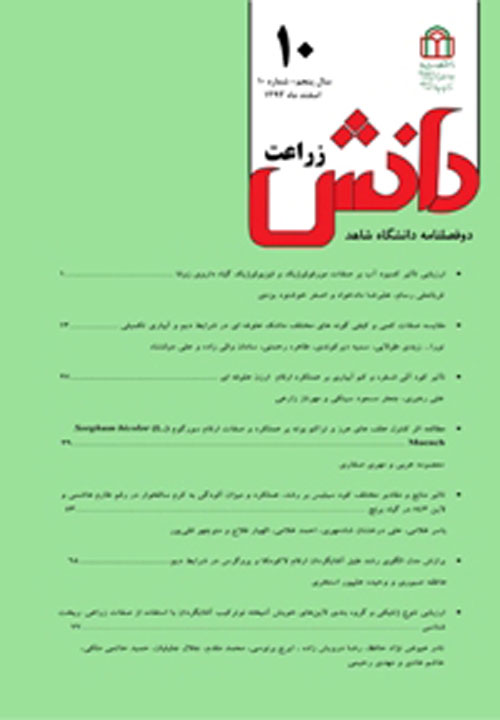Determine the best model to predict soybean yield in Mazandaran
Author(s):
Abstract:
Abstract In order to determine the best water production function (CWPF) for predicting grain yield of a soybean crop four models were evaluated. The four functions evaluated were Jensen (1968)، Minhas et al (1974) and modified Stewart et al (1977) and modified Bras and Corodova (1981) models. Field experiments were carried out for evaluation of the models. The grain yields simulated by the crop water production function were compared with the field measured data. The grain yields simulated by the crop water production function were compared with the field measured data. The base moisture stress sensitivity indices obtained for the vegetative، flowering and grain filling growth stages of the soybean crop were 0. 23، 0. 82، and 1. 1 respectively for Jenson (1968) and 0. 73، 2. 72 and 3. 4 respectively for Minhos et al (1974) model. The moisture stress sensitivity indices for the vegetative، flowering and grain filling growth stages for the modified Bras and Corodova (1981) model were 0. 25، 0. 73، and 1. 05 respectively and 0. 25، 0. 73 and 1. 05 respectively for modified Stewart et al (1977) model. The indices of the grain filling stage were noticed to be higher than the other growth stages، followed by the flowering stage and then the vegetative، for all models. The trend of the indices therefore implies that the grain filling growth stage was more critical to moisture deficit. Results showed that the models give good estimates of soybean grain yield with modified Bras and Corodova (1981) model performing slightly better than the other three models.
Keywords:
Language:
Persian
Published:
Jouran of Agronomy Sciences, Volume:4 Issue: 8, 2012
Pages:
1 to 14
https://www.magiran.com/p1206093


